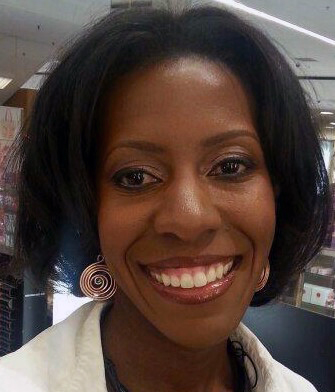 In a recent Youth Today webinar, I discussed the importance of understanding the discourse of African-American girls in an after-school reading and writing workshop centered around hair. In particular, I talked about the significance of call and response, a “rhythmic exchange” between a speaker and listener, in which all the speakers’ “statements (calls) are punctuated by expressions (responses) from the listener,” as explained in Geneva Smitherman’s 1977 book, “Talkin and testifyin: the language of Black America.”
In a recent Youth Today webinar, I discussed the importance of understanding the discourse of African-American girls in an after-school reading and writing workshop centered around hair. In particular, I talked about the significance of call and response, a “rhythmic exchange” between a speaker and listener, in which all the speakers’ “statements (calls) are punctuated by expressions (responses) from the listener,” as explained in Geneva Smitherman’s 1977 book, “Talkin and testifyin: the language of Black America.”
During the question-and-answer-period of the webinar, I was not asked to elaborate on the benefits of call and response to promote reading and writing. Instead, I was asked to explain the reason for developing a reading and writing workshop based on the topic of hair.
Why hair? While chatting with a group of 11-year-old girls at a community center, I asked them if I were able to create an after-school literacy program, what would be their topic of interest. The girls unanimously mentioned hair. I began to wonder if the best way to motivate the girls to engage in reading and writing was to make hair a central focus.
Unfortunately, African-American girls’ interest in hair is rarely embraced in school or supported in out-of-school settings. Yet hair is often viewed as a self-selected realm of economic, political, cultural and social power for African-American females.
For example, the AIDS Awareness campaign concentrated in African-American hair salons and barbershops is a testament to the significance and cultural importance of hair. Also, the first woman who became a self-made millionaire in the United States was an African-American woman, Madame C.J. Walker, whose empire was grounded in the care of African-American females’ hair.
I implemented, taught and conducted research in an after-school workshop that afforded African-Americans adolescent girls the opportunity to develop as readers and writers as they focused on a cultural topic that mattered to them.
One insight from the study is that doing hair is an entry to a market economy. The girls viewed doing hair as preparing for employment. Lanita Jacobs-Huey writes in “From the Kitchen to the Parlor: Language and African American Women’s Hair Care” that “enterprising adolescents and women earn capital or other bartered rewards as informal ‘kitchen beauticians’ to their friends, relatives, and acquaintances.
[Related: Lights On Afterschool Celebrations Recognize Programs Big and Small]
Both school and after-school programs can foster this enterprising vision of some youth by developing curricula that focus on hair or hair care and its relationship to professional education. These adolescents may develop research projects to learn about Madame C.J. Walker and other African-American hair professionals’ career paths, business principles and philosophies. These practical learning experiences would also allow the adolescents to increase their reading and writing skills as they learned more about a topic of interest.
There are countless creative activities teachers and out-of-school practitioners might consider to build on African-American girls’ interests in hair. A rich discussion about hair might be a prelude to reading realistic nonfiction texts (i.e., “The Color Purple,” “The Bluest Eye”), play scripts (i.e., “Straight and Nappy Hair”), song lyrics (i.e., “I Am Not My Hair”), or newspaper and magazine articles. During and after the reading, the teacher might ask probing questions to help students critically examine hair from a socio-political stance and its significance to African-American females and the mainstream society’s view of beauty.
One way of addressing some African American girls’ interests in hairstyling is to develop a learning center in a classroom setting that simulates a beauty salon environment. Within this space, the girls would be allowed to work on each other’s hair or mannequin dolls’ hair, evaluate each other’s performances and read manuals, books and magazines on the topic. Also, the girls can be encouraged to engage in rich follow-up discussions about the books they are reading in their simulated beauty salon. The teachers might also invite students to develop an original text based on their understanding of this cultural topic. Young girls might develop a culminating writing or multimedia project (a mini-movie, hair magazine, newsletter or song lyrics), collaboratively or individually.
We need to use youth’s culture as the central focus in planning after-school programs. This might include incorporating African-American youth’s linguistic resource, call and response, in a reading and writing workshop or developing an after-school workshop that focuses on hair. Hair is not the only vehicle we should consider when developing an after-school literacy program for African-American youth. Some youth might show little or no interest in this cultural topic, while others would be highly interested in exploring the topic of hair. Let’s be intentional in listening to our youth, observing their current cultural practices and implementing their cultural interests in the design of our afterschool programs.
Daneell Moore is an assistant professor in the Teaching and Learning Department at Troy University. Her research interests include literacy for diverse learners, African-American culture, discourse in formal settings and multimodality.
More related articles:
Setting Standards for Out-of-School Time
After the school day in Finland, play and more play
Two Fields Come Together in New Center for After-school and Summer Enrichment































